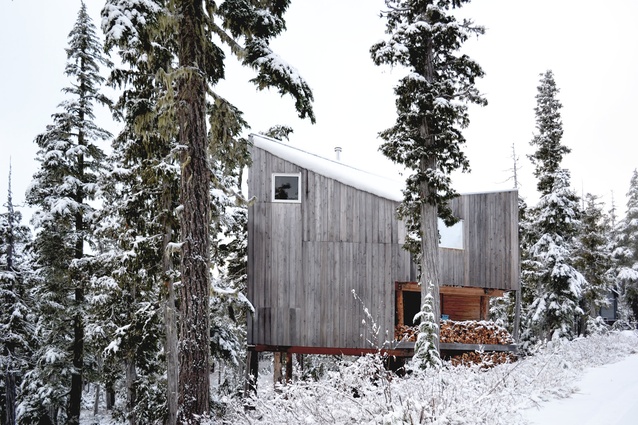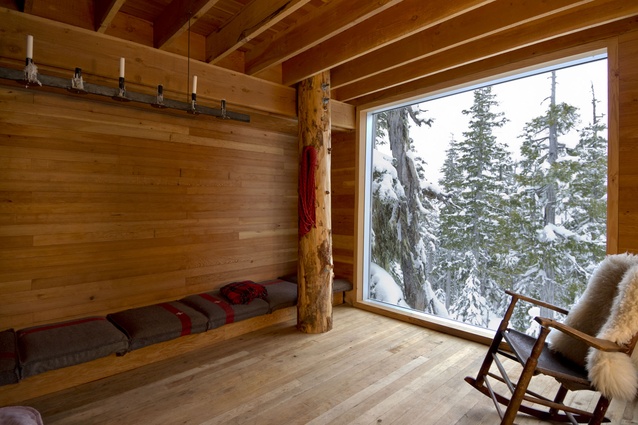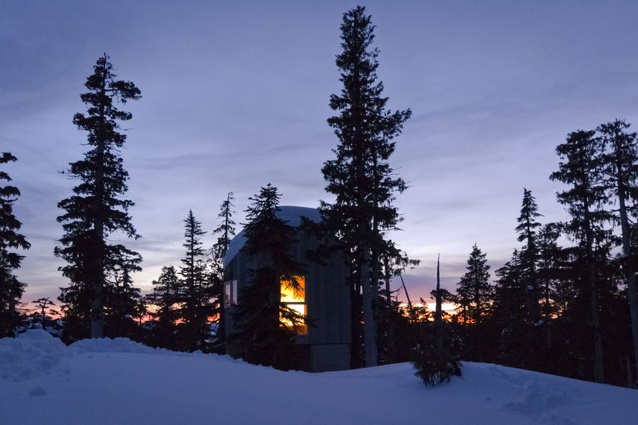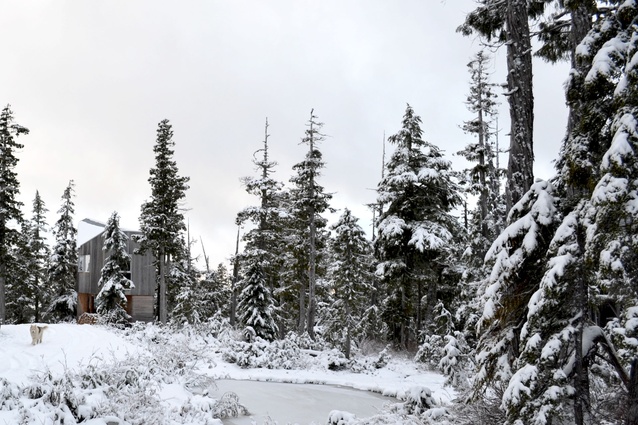Hot House
In many ways, this alpine cabin on the northern side of Vancouver Island is the antithesis of what husband-and-wife architects Susan and David Scott are used to crafting.
“We were working on buildings that were quite detailed and required a lot of design,” says David Scott, when asked about the amount of preparation and forethought required for creating plans of commissioned projects. “[With this cabin] we wanted to emulate that feeling we used to get at [architecture] school, where we were designing and building things directly.”
The opportunity came up after a particularly bad ski season in the remote logging region between Port McNeill and Port Hardy. The small, community-run, not-for-profit ski area (home to around 50 cabins) put up a few plots for sale and the Scotts, who are avid snowboarders, straight-aired at the opportunity.
“We have two young daughters who are just learning to ski. This is the perfect place for that,” says Scott of the pristine location. And, the site happened to be a few metres away from a gravel road used mainly by small timber trucks, which meant that offcuts and lengths of wood “were just dumped on the side of the road. We came up here with all of our stuff and a power generator and started working.”
The mountainside, 100m² building was constructed by the Scotts (who started their own firm, Scott & Scott Architects, almost two years ago) and about 40 friends during weekends and holidays over five years. No heavy machinery was allowed onto the site, so the workers dug holes by hand for the six Douglas fir pole columns that act as foundations. To lift these into place, a friend created a complex pulley system webbed by quarter-inch steel cables. This cat’s cradle was anchored to nearby trees and tied to the tips of the columns. A cleverly modified chainsaw was then used to reel the cables in, tension all the right pulleys and lift the timber into place.
“People thought we were mad; we were like a circus act!” says Scott.
The stilts cost significantly less than would excavated foundations, leave a minimal footprint on the land and allow the cabin to be raised well above the accumulating snow. It is that snow, which can fall for seven months of the year, that drove many of the design decisions in the architecture.
The geometry of the roof was chosen so that it could withstand up to 1.5m of the stuff. It slopes so that when the ice that has collected there avalanches, it falls clear of the entrance to the home.
Inside the cabin, most of the timber has been left untreated except for a few walls, where the couple used a mix of beeswax and whiskey to make the wood gleam. The infamous Douglas fir columns rupture through the floorboards as almost-accidental details and mirror the trees outside.
There is neither running water nor electricity. To start the sauna – the abode’s biggest luxury – water from the nearby creek has to be carried or tobogganed over and heated over a fire. Candle- or kerosene-lit evenings are spent not watching TV but reading books or playing sessions of Scrabble beside the iron stove. There’s plenty of drama nonetheless; from the large, double-glazed windows in the lounge, visitors can see chunks of ice shattering down from the nearby yellow cedar and fir forest.
The two-storeyed dwelling, which earned the Scotts a jury prize in the 2014 Architizer A+ Awards, has now become their flagship building.
“We didn’t know that this was going to define us,” Scott says of the onslaught of attention the project has garnered.
“It has made us think about what [sort of practice] we want to be.” What began as what Scott describes as the “antidote to the fussiness of computer drawing… and city living” has become a tactile, well-crafted testament to the power of improvisation, the search for variety in life and every boarder’s quest for reasonable powder.













